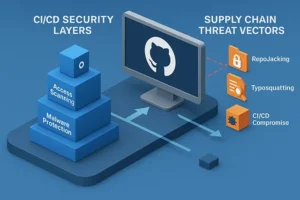Ethereum Scalability Solutions: Exploring for Efficient Network Performance

Ethereum scalability solutions with the increasing popularity and adoption of Ethereum, the need for scalability solutions has become paramount. Ethereum, a decentralized platform that enables the development of smart contracts and decentralized applications (dApps), has faced challenges in handling the growing demand and transaction volume on its network. You’ve probably read it already: Ethereum Price Prediction: Analyzing Factors, Models, and Expert Opinions Excellent. This article will delve into various Ethereum scalability solutions, exploring Layer 2 scaling solutions, sharding, optimistic rollups, and other notable approaches to enhance Ethereum’s scalability.
See also : Cryptocurrency Hardware Wallets: The Ultimate Guide to Secure Storage

I. Layer 2 Scaling Solutions
Layer 2 scaling solutions are off-chain protocols that aim to reduce the burden on the Ethereum mainnet by processing transactions on secondary layers. Two prominent Layer 2 solutions are state channels and Plasma.
- State Channels
State channels allow parties to transact off-chain while periodically submitting the final state to the Ethereum mainnet. This approach significantly reduces transaction costs and improves transaction speed. Projects like Raiden Network and Connext have implemented state channels, enabling faster micropayments and improving scalability. - Plasma
Plasma is a framework that creates independent blockchains, known as child chains, which are linked to the Ethereum mainnet. By processing transactions on these child chains and periodically submitting aggregated data to the mainnet, Plasma improves scalability. OmiseGO and Matic Network are notable projects implementing Plasma to enhance Ethereum’s performance. - Sidechains
Sidechains are separate blockchains connected to the Ethereum mainnet, allowing for increased transaction throughput and scalability. Projects such as Polygon (formerly Matic) and xDai leverage sidechains to enable faster and cheaper transactions, providing a viable solution for scalability.
II. Sharding Ethereum Scalability Solutions
Sharding is a fundamental concept in improving Ethereum scalability solutions. It involves partitioning the network into smaller shards, each capable of processing transactions and executing smart contracts independently. By distributing the workload across multiple shards, Ethereum can significantly enhance its scalability.
- How Sharding Works
In a sharded Ethereum network, each shard maintains its state and processes a subset of transactions. This parallelization allows for increased throughput and reduced congestion. Validators are assigned to specific shards, ensuring decentralized consensus across the network. Sharding holds the potential to dramatically increase Ethereum’s transaction capacity. - Benefits and Challenges of Sharding
The benefits of sharding include improved transaction speed, enhanced network capacity, and reduced fees. However, implementing sharding presents challenges, such as maintaining cross-shard communication, ensuring data availability, and handling secure and efficient shard execution. Research and development efforts are ongoing to address these challenges and pave the way for Ethereum’s future scalability.
III. Optimistic Rollups Ethereum Scalability Solutions
Optimistic rollups are Layer 2 solutions that aim to enhance Ethereum scalability solutions by processing transactions off-chain while ensuring their security through periodic verification on the Ethereum mainnet.
- How Optimistic Rollups Work
Optimistic rollups allow for faster transaction processing by aggregating multiple transactions off-chain and submitting a summary to the Ethereum mainnet. Smart contracts deployed on the rollup chain ensure the integrity and security of the transactions. This approach greatly improves scalability and reduces gas fees. - Prominent Optimistic Rollup Projects
Projects such as Optimism and Arbitrum have gained significant attention for their implementation of optimistic rollups. These projects provide developers and users with a seamless experience, offering high throughput and low transaction costs, thereby addressing Ethereum’s scalability concerns.
IV. Other Ethereum Scalability Solutions
Beyond Layer 2 scaling solutions, various other approaches aim to improve Ethereum scalability solutions.
- State Rent
State rent proposes a mechanism to charge users for storing data on the Ethereum blockchain. By incentivizing users to free up storage space and remove unused smart contracts, state rent can reduce bloat and enhance network performance. - EIP-1559
EIP-1559, or Ethereum Improvement Proposal 1559, is a proposal designed to reform Ethereum’s fee market mechanism. Currently, Ethereum uses a first-price auction system where users bid for transaction inclusion by setting gas fees. EIP-1559 aims to introduce a base fee that is burned, reducing overall supply and potentially mitigating fee volatility. This proposal can lead to a more predictable and efficient fee structure, making transactions more accessible and affordable for users.
- EVM Upgrades
The Ethereum Virtual Machine (EVM) is the runtime environment for executing smart contracts on the Ethereum network. Continuous upgrades and optimizations to the EVM can significantly enhance Ethereum scalability solutions. Projects like Ethereum 2.0 and Eth2.0 Virtual Machine (Ewasm) focus on improving the efficiency and speed of contract execution, leading to increased scalability and improved network performance. - Research and Development Efforts
The Ethereum community is actively engaged in ongoing research and development efforts to tackle scalability challenges. Initiatives such as Ethereum Foundation Grants and collaborations with academic institutions foster innovation and the exploration of novel solutions. These efforts include exploring technologies like zero-knowledge proofs, rollups, and further advancements in consensus algorithms to address scalability concerns.
V. Conclusion Ethereum scalability solutions
Ethereum scalability solutions is a crucial aspect for the future growth and adoption of Ethereum. The outlined solutions, including Layer 2 scaling, sharding, optimistic rollups, state rent, EIP-1559, EVM upgrades, and ongoing research and development efforts, demonstrate the Ethereum community’s commitment to enhancing scalability.
Implementing Layer 2 solutions like state channels, Plasma, and sidechains reduces the strain on the Ethereum mainnet, allowing for faster and more cost-effective transactions. Sharding has the potential to dramatically increase Ethereum’s transaction capacity by parallelizing the workload. Optimistic rollups offer a scalable off-chain approach while ensuring the security of transactions.
Additionally, proposals like EIP-1559 aim to improve the fee structure and predictability, while advancements in the EVM and ongoing research contribute to overall network optimization. Through these combined efforts, Ethereum strives to become a scalable and efficient platform that can support mass adoption and a wide array of decentralized applications.
As Ethereum continues to evolve, it is essential to monitor the progress of these scalability solutions and adapt to new developments. By addressing the challenges and implementing effective solutions, Ethereum can pave the way for a more scalable and inclusive decentralized future.
And for those of you who want to grow your Instagram account, you can directly use our service free instagram followers and you can like your post on instagram with Free instagram likes







